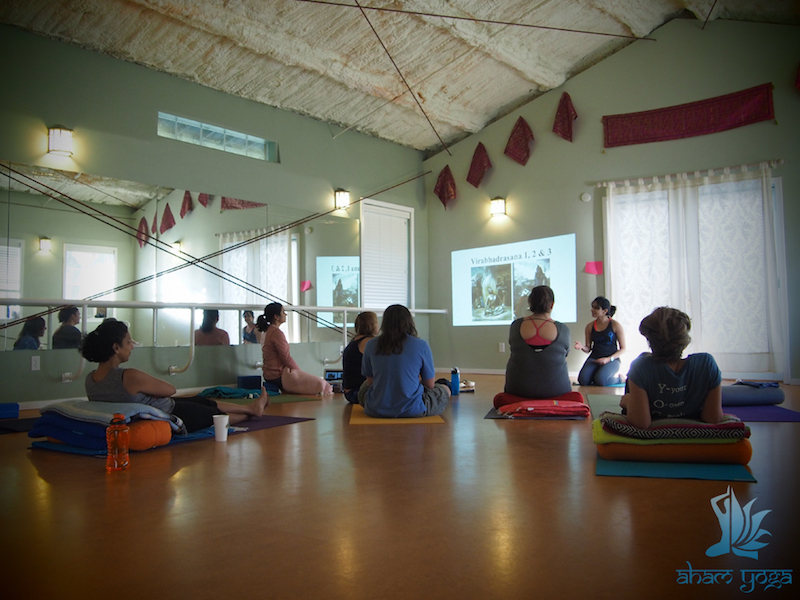2.1K

The Guru-shishya parampara was vibrant and an integral part of the Indian society. It thrived and flourished for centuries. When there was a need to pass on any spiritual, powerful or profound knowledge – it was done in a safe, trusting and intimate manner between the Guru (the master teacher) and shishya (disciple). This parampara (tradition) became an intimate and inseparable part of Indian society and structure. For centuries yogic and other wisdoms were passed on through this oral tradition. Even after written records emerged, this tradition continued. When someone realized something that was truly knowledgeable and worthy of being passed on, he looked for someone who was truly dedicated in learning, absorbing and passing on that knowledge to those around him. This chain carried on for centuries without a break. And came to be known as the “guru shishya parampara”.
The Guru shishya parampara is nothing like modern day education system structure. Even though it was not institutionalized, this tradition was very thorough and intricately woven with society. It ensured peaceful transmission of knowledge through the centuries.

guru shishya parampara
GURU
The word Guru means ‘one who dispels darkness’. ‘Gu’ means darkness and ‘ru’ means to dispel. This guru was by no means just an ordinary being. He dedicated his whole life and being in pursuit of that knowledge and that became his identity. One does not become a guru by calling himself so, it is a title that is awarded to a person by society recognizing his contribution.
SHISHYA
A shishya is a disciple, who is chosen by the Guru after a good amount of testing to be worthy of passing on this precious knowledge. He is brought to the gurukul (traditional school), at a young age by his parents. If accepted, he spends the rest of his learning years with the Guru and his family spending his days in learning, contemplation, meditation, discussion, absorption and assimilation. Being a disciple is no easy task. He not only studied but also helped out in everyday chores at the gurukul. When he had learnt all that he needed to, he was asked to pay his ‘guru dakshina’.
PAYING DUES
When the time was right for the shishya to graduate (in the modern sense) his guru would demand a “guru dakshina”. This payment was rarely in terms of money but more in terms of service, and was customized to each student depending on their growth and progress. Often in kind, to go and spread and share the knowledge with others. The Guru dakshina was in accordance to the ability of the student. If one was asked to go spread knowledge, perhaps another was asked to start a family and become a householder and so on. No two students were alike in this system. This system also ensured that knowledge was not determined by affordability, but rather ability and sincerity.
SIGNIFICANCE OF A GURU
Sadhguru has said this beautifully, “A guru is not a teacher. The Guru-shishya relationship is on an energy basis. He touches you in a dimension where nobody else can. There is a space where nobody else – your husband, your wife, your child, your parent – can touch you. They can only touch you in your emotion, your mind or your body. If you want to reach the very peak of your consciousness, you need lot of energy – all the energy you have and more. A Guru-shishya relationship has become so sacred and important because when the crisis moment comes in a disciple’s growth, he needs a little push on the energy level. Without that push, he doesn’t have the necessary energy to reach the peak. Only someone who is on a higher plane than yourself can give that little push to you. Nobody else.”
LIFESTYLE
The indian lifestyle by principle is inherently simple. The pursuit of material possessions is considered to be an impediment in the spiritual journey of the sadhaka as they tie him to the material world. The Guru tried to teach by example the importance of a simplistic, non-possession driven lifestyle. It was never about pampering the body but more about the mind and going beyond to walk towards a path of self realization.
HOW LONG DID IT TAKE?
There were no set years to graduate as in modern education. This parampara was a customized system where each individual was taught according to his capacity. So it is not possible to put down numbers in terms of years. It was more about how much was absorbed, practiced and lived above everything else.
IMPACT?
By passing on yogic wisdom with utmost care, our predecessors have managed to preserve its integrity for centuries. They believed that spiritual knowledge should never be written down as it would fall into the wrong hands and be misinterpreted. Also, not everybody was deserving of this knowledge. It had to be earned or deserved. By controlling who had access to this wisdom, it never got diluted, misinterpreted or lost over thousands of years. Also, the ones who got access to this knowledge would do the best they could to pass it down. To these people we have to be grateful for they let us have yoga!
MODERN TIMES:
In modern times, we still find fragments of the Guru-shishya parampara in India. It it is not easy to find the right Guru, however, and some spend their entire lives seeking this master. What we can take away from this is that one needs to seek knowledge and growth at all stages of life.

